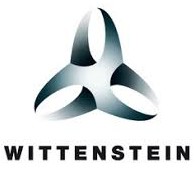|
|||||||||||||||
|
Loading
+FAT how to create two partitions on SD cardPosted by spikeroot on August 4, 2017 I'm having a hard time figuring out how to do this. Here is my code, could you tell me what is wrong with it? ffconfigMAXPARTITIONS is set to 2, and the 2nd call to FFFormat is only finding 1 partition when it calls FF_PartitionSearch. ~~~ static FFDiskt Disks[ffconfigMAX_PARTITIONS]; static FFIOManagert * CreateIoManager(FFDiskt * pdisk) { FFCreationParameterst xParameters; memset( &xParameters, '0', sizeof( xParameters ) ); xParameters.pxDisk = pdisk; xParameters.pucCacheMemory = NULL; xParameters.ulMemorySize = 1024; xParameters.ulSectorSize = 512; xParameters.fnWriteBlocks = prvFFWrite; xParameters.fnReadBlocks = prvFFRead; xParameters.xBlockDeviceIsReentrant = pdFALSE; if (!xPlusFATMutex) xPlusFATMutex = xSemaphoreCreateRecursiveMutex(); ASSERTANDRETURN(xPlusFATMutex, NULL); xParameters.pvSemaphore = ( void * ) xPlusFATMutex; } int FFSDDiskTwoPartitionFormat(void) { for (sizet i = 0; i < ffconfigMAXPARTITIONS; i++) { memset(&Disks[i], 0, sizeof(Disks[i])); Disks[i].ulNumberOfSectors = RTEStorageGetBlockCount(RTESTORAGE_CARD); Disks[i].pxIOManager = CreateIoManager(&Disks[i]); if (!Disks[i].pxIOManager) return -1; } ~~~ +FAT how to create two partitions on SD cardPosted by rtel on August 7, 2017 Is this a different topic to this thread: https://sourceforge.net/p/freertos/discussion/382005/thread/4874bbe8/ ? +FAT how to create two partitions on SD cardPosted by heinbali01 on August 7, 2017 The topics are indeed quite similar. Before answering, I will try-out the above code on an SD-card +FAT how to create two partitions on SD cardPosted by heinbali01 on August 7, 2017 PS. please check all return codes from the library calls and it may also useful to define +FAT how to create two partitions on SD cardPosted by spikeroot on August 7, 2017 My code is checking all return values. The second call to FF_Format is returning 0x86000010. I also have FF_PRINTF defined, and here is the output: FFFormat: Secs 124868608 Rsvd 32 Hidden 0 Root 0 Data 124868576 FFFormat: SecCluster 64 DatSec 124838016 DataClus 1950594 ulClusterBeginLBA 30592 FFFormat: Clearing entire FAT (2 x 15240 sectors): FFFormat: Clearing done FFFormat: Clearing root directory at 00007780: 64 sectors FFPart: no partitions, try as PBR FFPart: no partitions, try as PBR FFPart: no partitions, try as PBR prvDetermineFatType: firstWord 0000FFF8 +FAT how to create two partitions on SD cardPosted by heinbali01 on August 7, 2017 I'm working on it, about one hour to go :-) +FAT how to create two partitions on SD cardPosted by spikeroot on August 7, 2017 Thanks! Appreciate your responsive support on this forum. +FAT how to create two partitions on SD cardPosted by heinbali01 on August 7, 2017 Hi Michael, the biggest problem with your code was this line: ~~~ partitions.ulHiddenSectors = 0; ~~~ As a consequence, the boot sector 0 got overwritten while formatting partition 0.
The meaning of I will add a There were some other issues, like not settings the signature: ~~~ pxDisks[ i ]->ulSignature = sdSIGNATURE; ~~~ As multiple partitions are rarely used, the documentation about this feature is maybe not optimal. We're sorry about this. Here below you find an attachment called Please tell us how it goes. Thanks, Hein Attachmentsformat_partitions.c (4104 bytes) +FAT how to create two partitions on SD cardPosted by heinbali01 on August 7, 2017 Another thing that I changed was: ~~~ - xParameters.ulMemorySize = 1024; + xParameters.ulMemorySize = 3072; // 1024; ~~~ This is the amount of cache memory per I/O handler. Recently there was a question about the "optimal" size of this cache memory. I found that at most 9 sector buffers were being used simultaneously in a busy application: https://sourceforge.net/p/freertos/discussion/382005/thread/ea301981/?limit=250#3a53 So this would be safer: ~~~ xParameters.ulMemorySize = 9 * 512; ~~~ If you have a single task that makes use of FreeRTOS+FAT, the size of the caching memory may be less. +FAT how to create two partitions on SD cardPosted by spikeroot on August 9, 2017 I've incorporated your suggestions and am now successfully partitioning my SD card. But now my problem is that Windows won't read the second partition. I can see it through the disk management console, but I can't actually access it. Apparently (and I wish I'd known this before) Windows just doesn't recognize multiple partitions on a removable drive. I found a couple workarounds that involved installing a hacked-together driver to make windows see it as a non-removable drive, but only ended up causing Windows to run its "Repair Windows" utility upon restarting and re-install the old driver. Do you have any other suggestions for accessing the second partition? Link to my original question about being able to access all partitions: https://sourceforge.net/p/freertos/discussion/382005/thread/4874bbe8/ +FAT how to create two partitions on SD cardPosted by heinbali01 on August 9, 2017
Yes I do, use Linux :-) I just checked my SD-card under ubuntu. It shows the two partitions created by FreeRTOS+FAT. I see their contents and I can write to them. Also running the file check program showed success: ~~~ root@myubuntu:~# fsck.vfat /dev/sdb1 fsck.fat 3.0.28 (2015-05-16) /dev/sdb1: 6 files, 6/123381 clusters root@myubuntu:~# fsck.vfat /dev/sdb2 fsck.fat 3.0.28 (2015-05-16) /dev/sdb2: 3 files, 3/123381 clusters ~~~ My W10 only sees a single partition. +FAT how to create two partitions on SD cardPosted by heinbali01 on August 9, 2017
With W10, of course I mean Windows-10. Also when I try to (re-)format the SD-card it will only see the first partition, i.e. it only sees 50% of the actual disk size. +FAT how to create two partitions on SD cardPosted by spikeroot on August 9, 2017 Linux might be an option if I were the user of my product. Unfortunately, I need to make it work for Windows users. My original question was whether I'd be able to access all partitions from Windows. Apparently the answer should have been "no." I understand now that this limitation is inherent in Windows.
Copyright (C) Amazon Web Services, Inc. or its affiliates. All rights reserved.
|
|||||||||||||||
NXP tweet showing LPC5500 (ARMv8-M Cortex-M33) running FreeRTOS.
Meet Richard Barry and learn about running FreeRTOS on RISC-V at FOSDEM 2019
Version 10.1.1 of the FreeRTOS kernel is available for immediate download. MIT licensed.
View a recording of the "OTA Update Security and Reliability" webinar, presented by TI and AWS.
FreeRTOS and other embedded software careers at AWS.














